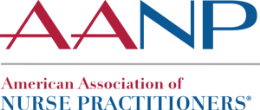Major Depressive Disorder Rates Are Increasing — What Nurse Practitioners Need to Know

Learn more about this illness, treatment options and the importance of self-care — for patients and clinicians.
Before the pandemic, roughly 6.5% of the U.S. population experienced major depressive disorder (MDD). Now, MDD rates range from 21% to 30%, in part a reaction to the uncertainty and loss of the last few years. The positive news is that MDD can be diagnosed and treated to reduce its impact on patients. In this article, Psych and Mental Health Specialty Practice Group (SPG) co-chair Lisa Anderson, DNP, APRN, PMHNP-BC, shares ways to identify patients experiencing clinical depression. She also offers tips for developing effective, individualized treatment plans.
MDD Symptoms and Stigma
One barrier to successful treatment occurs when a patient does not realize they are experiencing MDD. “There is still a huge stigma surrounding mental health disorders in general, and that prevents a lot of people from seeking the help they need,” says Anderson. “A lot of people may be in denial about their symptoms, as well.” Simple screening tools can help bridge the gap between what a patient is experiencing and what treatment may be best to alleviate their symptoms. “There are different screening tools depending on the population that you work with,” states Anderson. “Depending on the assessment, we can say, ‘You’ve been endorsing a low mood, depressed, sad and having problems with concentration and sleep, and you’ve noticed all these symptoms — this is MDD.’”
Patients experiencing stigma around MDD may continue to be resistant to a diagnosis, even with the results of a screening test in hand. Anderson suggests comparing the diagnosis of MDD to a physical disease, an adjustment in perspective that may help a patient see MDD as a treatable illness instead of a personal failing. “What I’ll typically do is relate [MDD] to a very common medical disorder like high blood pressure, diabetes or high cholesterol. I like to use those because everyone knows what they are. Relate that to depression, and tell them, ‘You don’t have to feel this way.’ We can get those depressive symptoms into full remission, because that is the ultimate goal of treating depression.”
Medication and More
Treatment for MDD may include psychotherapy, pharmacotherapy or a mixture of the two. When treating MDD and any co-occurring conditions with medication, nurse practitioners (NPs) work with patients to identify the best option. However, medications do not work unless they are taken. After 30 days of treatment, almost half of patients discontinue antidepressant therapy. To combat patient frustration with treatment, Anderson suggests immediately letting patients know what side effects may occur with their new medication.
“Anticipatory guidance is super important. Tell patients up front, ‘Look, this medicine is going to give you a headache – expect a headache or expect nausea.’” Additionally, letting patients know how long they may expect to have side effects and what side effects are outside the range of what is appropriate is crucial. Anderson tells patients, “If you are still having side effects after that 10-day mark, call me. Likewise, the side effects should not be interfering with your daily functioning. They’re unpleasant, they’re a nuisance, but if you’re vomiting to the point where you can’t even go to work, that isn’t supposed to happen.”
Clinician Well-Being
NPs can help break down the stigma around MDD by encouraging patients to make healthy changes that will improve their quality of life. Patient interventions are most effective when they are modeled by clinicians who are at their healthiest mentally and physically. In fact, a great overlap exists between positive mental and physical health, which are supported by self-care. “There’s been research and literature about nurses being burnt out with the COVID-19 pandemic,” states Anderson. “Don’t lose sight of the burn out, and if you are feeling burnt out, talk to somebody. There is no harm of an NP going to their own therapist, to just have an outlet to say, ‘Okay, this is how I’m feeling, I need some help.’ It’s okay to ask for help — it absolutely is.”
Mental Health Resources and Continuing Education From AANP
A free monograph activity, Major Depressive Disorder: Evidence-Based Strategies to Improve Patient Outcomes, is now available in the AANP CE Center to help you screen, identify, treat and monitor patients with MDD. This activity is co-presented by Anderson and Brayden N. Kameg, DNP, PMHNP-BC, CARN-AP, CNE. Earn 1.0 contact hours of continuing education credit, 0.5 of which may be applied toward pharmacology, upon completion of this activity.
AANP members may also be interested in joining the AANP Psych Mental Health Community, obtaining the latest mental health updates at the 2023 AANP National Conference in New Orleans on June 20-25 and accessing resources from The Emotional PPE Project offered within the AANP member benefit program, NPower.

